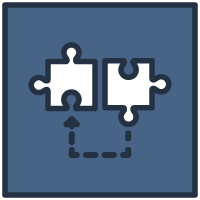References
Alsop, L., Berg, C., Hartman, V., Knapp, M., Lauger, K., Levasseur, C., Prouty, M., & Prouty, S. (2012). A family guide to interveners. Logan, UT: Utah State University, SKI-HI Institute. Retrieved from http://www.sparkle.usu.edu/ima...
Alsop, L., Robinson, C., Goehl, K., Lace, J., Belote, M., Rodriguez-Gil, G. (2007). Interveners in the classroom: Guidelines for teams working with students who are deafblind. Logan, UT: Utah State University, SKI-HI Institute.
Alsop. L. (2004). Competencies for training interveners to work with children and students with deafblindness. Logan, UT: Utah State University, SKI-HI Institute. Retrieved from http://www.perkinselearning.or...
Alsop, L., Blaha, R., & Kloos, E. (2000). The intervener in early intervention and educational settings for children and youth with deafblindness. Monmouth, OR: Western Oregon University, Teaching Research, National Technical Assistance Consortium for Children and Young Adults Who Are Deaf-Blind. Retrieved June 21, 2013 from http://nationaldb.org/library/...
Canadian Deafblind Association (National). (1995; revised September 2005). Principles of the Canadian concept of "intervention." Retrieved from http://www.cdbanational.com/pr...
McInnes, J. M. (1999). Intervention. In J. M. McInnes (Ed.), A guide to planning and support for individuals who are deafblind, pp. 75-118. Toronto: University of Toronto Press.
Monaco, C. & Ramey, C. (2004). The learning style of individuals who are congenitally deafblind and/or emergent communicators.
Morgan, S. (2001). "What's My Role?": A comparison of the responsibilities of interpreters, interveners, and support service providers. Deaf-Blind Perspectives, 9(1), 1-3. Retrieved from http://documents.nationaldb.or...
Olson, J. (2004). Intervenor training. Deaf-Blind Perspectives, 12(1), 1-5. Retrieved from http://documents.nationaldb.or...
